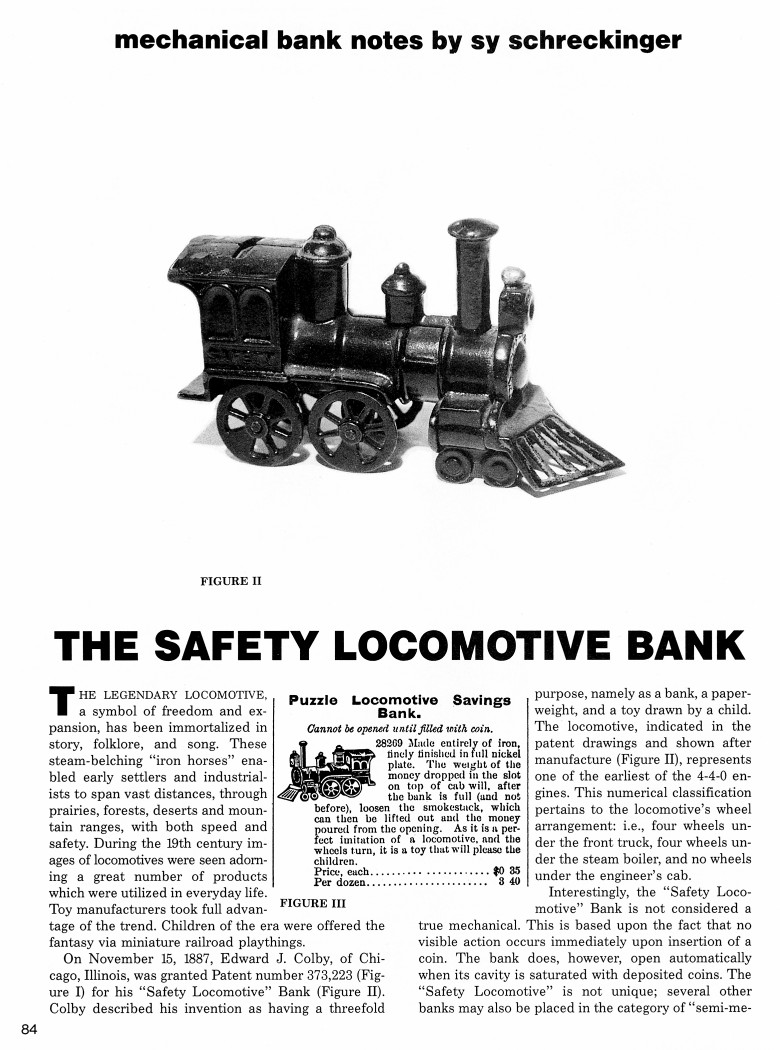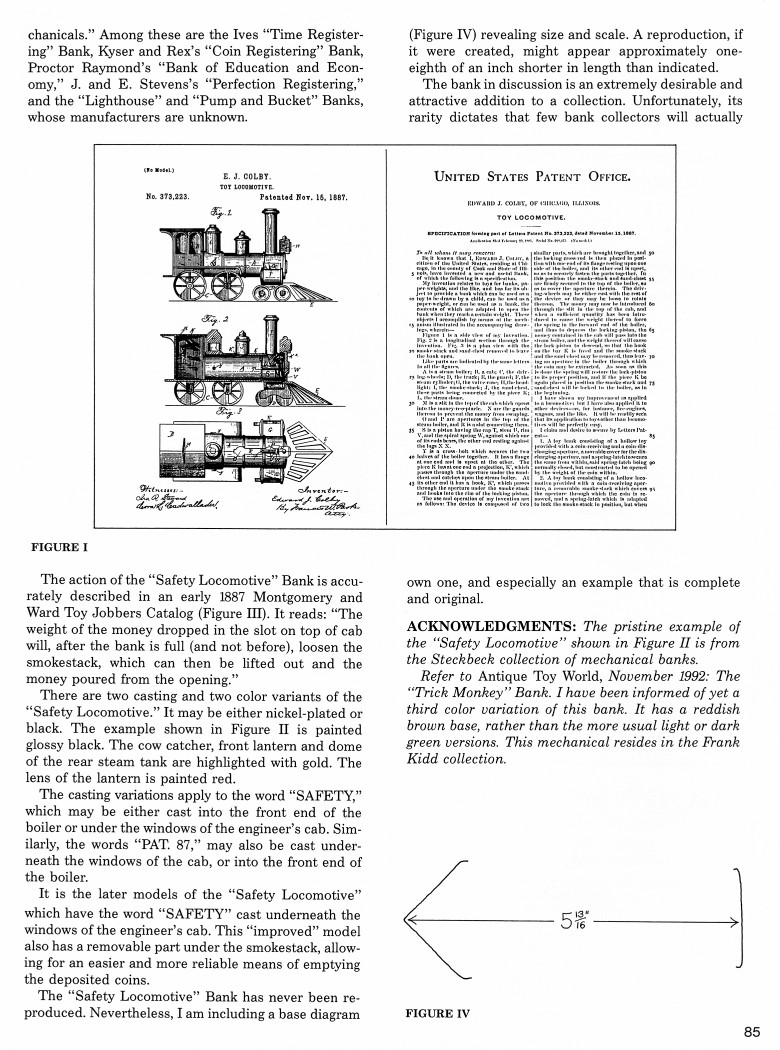|
The Safety Locomotive Bank
by Sy Schreckinger – ANTIQUE TOY WORLD Magazine – January, 1993
The legendary locomotive, a symbol of freedom
and expansion, has been immortalized in story, folklore, and song. These
steam-belching "iron horses" enabled early settlers and industrialists
to span vast distances, through prairies, forests, deserts and mountain
ranges, with both speed and safety. During the 19th century images of
locomotives were seen adorning a great number of products which were
utilized in everyday life. Toy manufacturers took full advantage of the
trend. Children of the era were offered the fantasy via miniature railroad playthings.
On November 15, 1887, Edward J. Colby, of Chicago, Illinois, was
granted Patent number
373,223 (Figure I) for his "Safety Locomotive" Bank
(Figure II). Colby described his invention as having a threefold purpose,
namely as a bank, a paperweight, and a toy drawn by a child. The
locomotive, indicated in the patent drawings and shown after manufacture
(Figure II), represents one of the earliest of the 4-4-0 engines. This
numerical classification pertains to the locomotive's wheel arrangement:
i.e., four wheels under the front truck, four wheels under the steam
boiler, and no wheels under the engineer's cab.
Interestingly, the "Safety Locomotive" Bank is not considered a true
mechanical. This is based upon the fact that no visible action occurs
immediately upon insertion of a coin. The bank does, however, open
automatically when its cavity is saturated with deposited coins. The
"Safety Locomotive" is not unique; several other banks may also be placed
in the category of "semi-mechanicals." Among these are the Ives "Time
Registering" Bank, Kyser and Rex's "Coin Registering" Bank, Proctor
Raymond's "Bank of Education and Economy," J. and E. Stevens's "Perfection
Registering," and the "Lighthouse" and "Pump and Bucket" Banks, whose
manufacturers are unknown.
The action of the "Safety Locomotive" Bank is accurately described
in an early 1887 Montgomery and Ward Toy Jobbers Catalog (Figure III). It
reads: "The weight of the money dropped in the slot on top of cab will,
after the bank is full (and not before), loosen the smokestack, which can
then be lifted out and the money poured from the opening."
There are two casting and two color variants of the "Safety
Locomotive." It may be either nickel-plated or black. The example shown in
Figure II is painted glossy black. The cow catcher, front lantern and dome
of the rear steam tank are highlighted with gold. The lens of the lantern
is painted red.
The casting variations apply to the word "SAFETY," which may be
either cast into the front end of the boiler or under the windows of the
engineer's cab. Similarly, the words "PAT. 87," may also be cast
underneath the windows of the cab, or into the front end of the boiler.
It is the later models of the "Safety Locomotive" which have the word
"SAFETY" cast underneath the windows of the engineer's cab. This
"improved" model also has a removable part under the smokestack, allowing
for an easier and more reliable means of emptying the deposited coins.
The "Safety Locomotive" Bank has never been reproduced. Nevertheless,
I am including a base diagram (Figure IV) revealing size and scale. A
reproduction, if it were created, might appear approximately one-eighth of
an inch shorter in length than indicated.
The bank in discussion is an extremely desirable and attractive
addition to a collection. Unfortunately, its rarity dictates that few bank
collectors will actually own one, and especially an example that is
complete and original.
ACKNOWLEDGMENTS: The pristine example of the "Safety Locomotive"
shown in Figure II is from the Steckbeck collection of mechanical banks.
Refer to Antique Toy World,
November 1992: The "Trick Monkey" Bank. I
have been informed of yet a third color variation of this bank. It has a
reddish brown base, rather than the more usual light or dark green
versions. This mechanical resides in the Frank Kidd collection.
|


